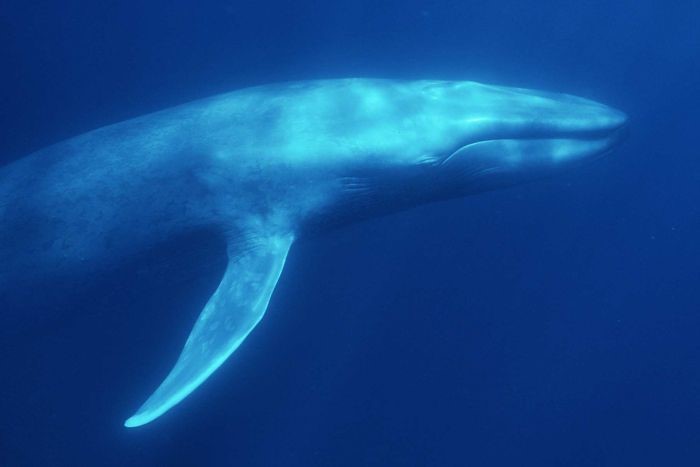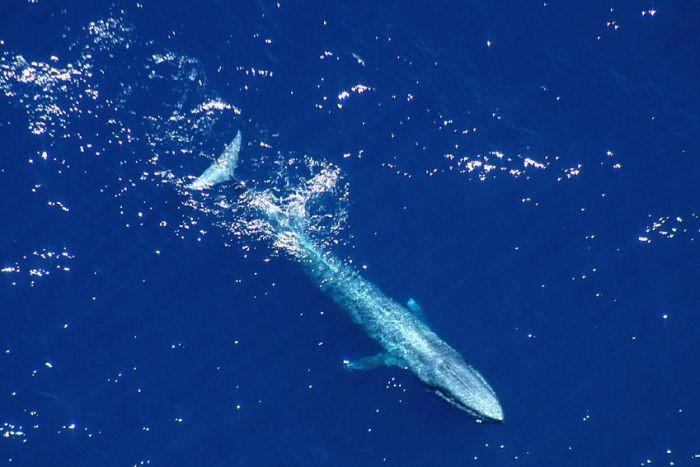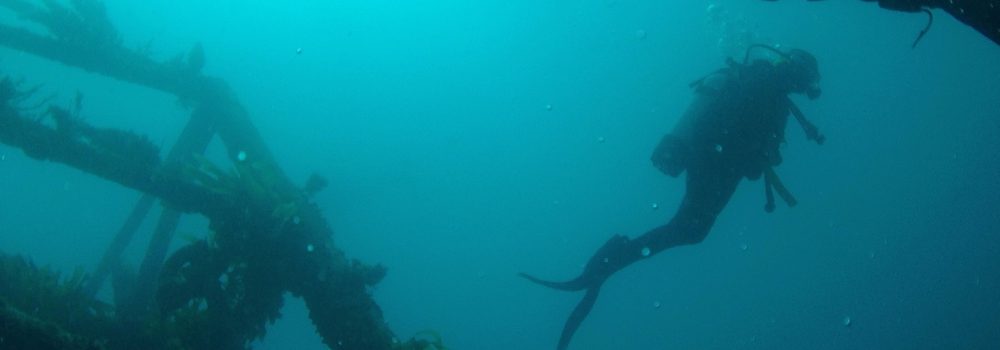
Photo: Blue whales are flocking to the Bight in record numbers. (Supplied: Mike Johnson/Australian Antarctic Division
Scientists estimate that there are up to 50 blue whales in the Great Australian Bight this summer, the highest number ever.
CEO of the Blue Whale Study, Pete Gill, said it was thanks to tuna spotters that this year’s boom was on record. “We are a very small organisation, and getting the money to do those kinds of surveys is hard; we can’t get out there as often as we would like, so we’ve missed whole years,” Dr Gill said. “Commonwealth funding dried up years ago, we had industry funding from oil and gas companies, but over the years that also dropped off.
In 2003, scientists were doing a survey for an oil and gas company to see if there were any whales in the area and,”… low and behold, there were, to our great surprise. We didn’t know they were there…In December 03 there were a lot, in 04 there were none, in 05 there were a lot … so there’s something about certain seasons that means a lot of blue whales gather out there to feed,” Dr Gill said. “This year, for whatever reason, and I don’t understand what’s different about the oceanography this year, this year there are really a lot of blue whales, along with sperm whales and pilot whales, killer whales too.
 Photo: Scientists say funding for blue whale observations “dried up years ago”. (Supplied: Blue Whale Study)
Photo: Scientists say funding for blue whale observations “dried up years ago”. (Supplied: Blue Whale Study)
Spotters had been seeing whales for years, but she did not realise they were the only people seeing them.
Mr Austin has been a tuna spotter on and off for 30 years, but still felt a thrill when he saw whales in their natural environment. “It’s unbelievable from the air, you see them come up from the depths and go back down,” he said.
“The other day it was quite speccy, we came across two whales charging along together at 25, 30 miles an hour, and that excited me.
“Normally they are just milling around — but that was incredible, they can be more than 100 years old, up to 170 tonnes — that was a buzz, to see them moving that fast, and together.”
No-one is sure why the blue whales have come to the Bight this year. But researchers believe it is related to an earlier than usual ‘upwelling’ in the region
“They don’t fast like other whales; they eat all year round.” Blue whales spend winter around the southern islands of Indonesia, then travel south past Perth to the bottom of Australia and spend summer in an area of the ocean called the Bonney Upwelling, off the coast of Portland, Victoria. This year, the whales have spent at least two months spread along the continental shelf, from the tip of the Eyre Peninsula to south of Kangaroo Island.
“Oceanography is unpredictable, that is what drives this productivity — and the key to it all is krill, that’s what blue whales eat 99.9 per cent of the time.” But that was not the case this year, which also had researchers confused. “They are eating something else and we aren’t sure what.
“I have no doubt that blue whales will eat whatever else is around.
Seismic surveys have been approved in the region from early September to late November 2019. “Seismic surveys are definitely a real concern to whale scientists,” Dr Gill said. “The risk is that blue whales are displaced from areas that they need to be to feed, or if they have no other feeding alternatives, and choose to stay because they are hungry, they could be exposed to hearing damage.
“But as it is a lot of these seismic surveys keep coming, technology improves, areas are surveyed again, and marine life that lives in these areas is exposed to them, and a recent concern is a study that’s found that the krill species that these whales are eating can be killed by these surveys,” he said. “And having said that there is very little solid data, there is a lot speculation, hot air and emotive feeling — and yes, we are concerned about this as well.
“The oil and gas industry use what’s called passive acoustic monitoring, it’s one of their mitigation measures — but it won’t hear blue whales calling, it only hears whales that make higher frequency calls, so it has its limits.
“Blue whales have these deep, low-frequency calls — below our hearing — and this passive acoustic equipment isn’t designed to pick up on that.”
